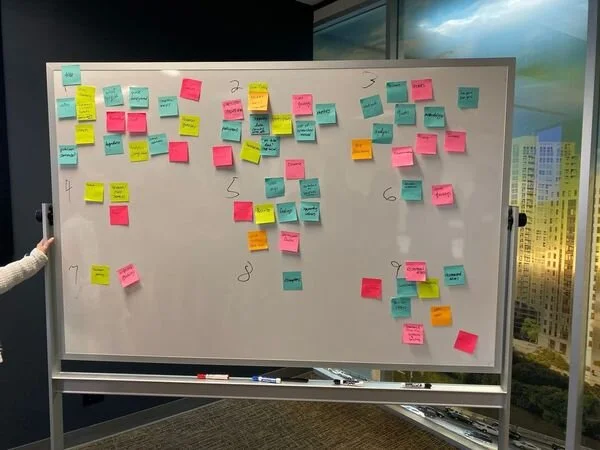How do you deliver a kick-butt research report? That was the question answered in a workshop last fall, hosted by the Austin User Experience Professionals Association (UXPA). The interactive workshop was led by Laura Faulkner, PhD & Head of User Experience Research at Rackspace.
We all want to craft and present research findings in a way that’s engaging and drives action, but it’s no simple task. This workshop allowed me to see how others do it and take away a few AHAs:
#1: The stakeholder is the “user” of our research report.
As UX researchers, we’re the voice of the users. We speak with them, listen to their frustrations, and aim to understand their needs. That’s why I love this statement Dr. Faulkner shared:
“The stakeholder is the user of our research.”
This sentence is so true but can be forgotten at times. I can become so focused on representing the users I’m learning about that I forget the people who have to USE the research.
What happens once your study concludes? Nothing’s worse than showing your report once, and then having it collect dust in a desk drawer or Box Drive folder. Combat dust collection with actionable recommendations, and clear takeaways that colleagues are tempted to repeat and share.
#2: Get to the bottom line.
Who knew you could gain a takeaway from an icebreaker? We introduced ourselves to the group by saying our name, current job role, and a time when someone didn’t believe us. Name and job are simple and only take a moment. Thinking of and telling a story about yourself on the spot requires a little more finesse. That’s why Dr. Faulkner would ask us “what’s the bottom line?” when any one of us would ramble or start to share more details than necessary.
For the sake of time and audience attention, she was forcing us to get to the point. Research reports should aim for the same thing - what stakeholders want to know is what to do, and why.
#3: Assign risk and opportunity cost.
At the end of the day, our stakeholders make the final decision on what actions to take. It’s up to us to inform those decisions in language that they understand. What is the business cost of not taking action on X? What’s the likelihood that this design will block users?
At Slide UX, we use high, medium, low usability risk icons to help prioritize our findings and recommendations in our reports. In addition to the risk of what’s there, we should be looking at the opportunity cost of what’s NOT there. When we clear distill what we’ve learned, our stakeholders are empowered to make better decisions.
#4: Meet stakeholders where they are.
In one exercise, we were asked to sit on the floor and identify our stakeholders. What’s the stakeholder’s role, who do they report to, and what would project success look like to them?
That activity forced us to consider what our stakeholders really need from our work. But more importantly, it got us out of our comfort zone. Up until this point in the workshop, we all had been sitting at tables. By moving to the floor, we could physically feel the awkwardness.
When we present research we know inside and out, we’re in our element, sitting comfortably at the metaphorical table. Our stakeholders might feel out of their element, like they’re sitting on the floor.
Empathy is a characteristic crucial for researchers when we speak to users. Let’s not forgot about it when talking to our stakeholders!
How might we, as researchers, exacerbate this issue? When we start with jargon and methodology, we are speaking the language of research. Dr. Faulkner recommends jumping straight into recommendations to capture attention, and avoid losing stakeholders in the nitty-gritty details. Keep your methodology slide at the end or in the appendix, though. There will always be someone in the audience who hears something they didn’t expect and wants to check your sources.
As a budding UX researcher, this workshop was a great reminder and motivator to rethink how I currently organize research reports and what I could change in future ones. In the end, the answer to “who’s your research report for?" is the stakeholder. By framing and remembering them as users of our research, it can only help us craft kick-butt reports!



